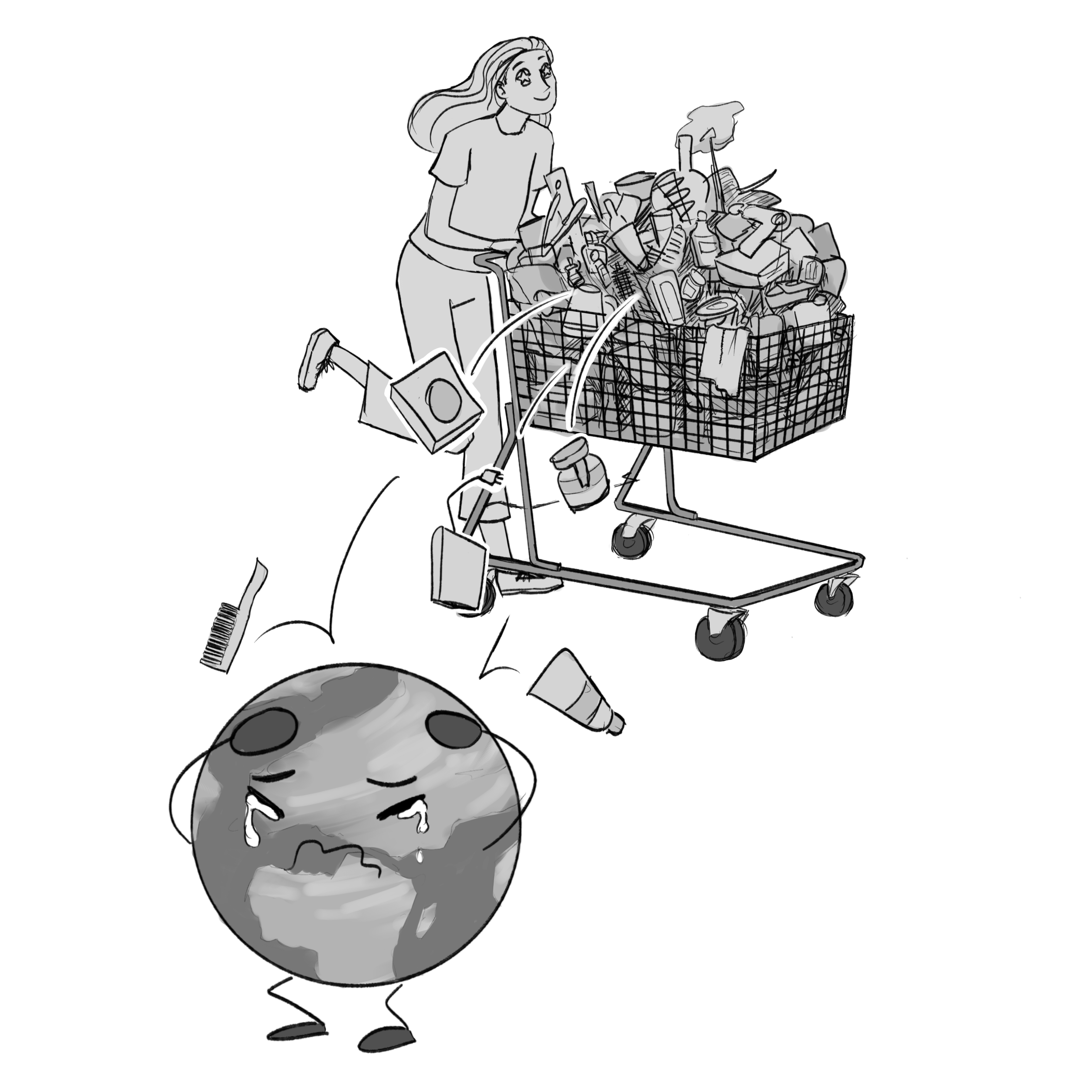Consumerism is being advertised as self expression, and it’s killing the planet
March, 2024
Corporate behemoths don’t only sell products — they sell concepts. Companies tell consumers that their products will make them cool, productive, and successful; this is mainly achieved through the use of social media. The modern era has made teenagers, a demographic that has always been easy to influence, even more vulnerable to companies dictating their lifestyles and more importantly, their personal worth.
The influence of social media advertisements is undeniable. Ads are everywhere online, but they also often cross over into real life. Companies do their best to make teenagers think they need whatever it is they’re being sold in order to be up to date with current trends. This is only amplified by seeing influencers with those same products. According to Forbes, companies create advertisements by following four basic precepts: a successful advertisement must be memorable, meaningful, strongly tied to a specific brand, and able to “communicate how the product … makes [the consumer] better.” These messages often pressure viewers into purchasing these products to achieve the “ideal” life.
Aside from extensive advertising, companies promote consumerism by engaging in a phenomenon known as planned obsolescence, where they purposely design their products to age poorly, so that people feel the need to buy the newest version. According to France24, multiple countries are investigating Apple for intentionally installing software updates that harm battery life and make repair difficult.
Overconsumption not only impacts a teenager’s wallet, but also the environment. In today’s age of social media advertisement, companies push out new trending products at staggering speeds; more often than not, these mounds of products end up being improperly disposed of. This results in substantial amounts of mismanaged waste sitting in landfills. A prime example is the electronics industry, which, according to The World’s Counts, makes up 70 percent of overall toxic waste. The majority of a phone’s carbon footprint is derived from its manufacturing processes, which involves the usage of rare earth minerals. In order to extract these minerals, the mining process creates a huge amount of toxic waste, such as mercury, which can flow into nearby waterways and pollute marine ecosystems and drinking water. Gold and tin mining have also contributed to deforestation in the Amazon, which stores 150–200 billion tons of carbon. According to a 2022 study by Lövehage et al., the representative carbon footprint of a smartphone is estimated to be 50 kg of carbon dioxide. In 2021, Apple generated 52,490 tons of highly toxic waste. With social media encouraging people to replace their phone every one or two years, both the emissions of production and the impacts of waste are exacerbated.
While it’s easy to acknowledge the current climate crisis and the role that consumerism plays, it’s much more difficult to take action and break out of our current cycle. In our generation of teenagers specifically, a herd mentality is highly pervasive. Breaking free from this pressure starts with separating overconsumption from social status — overconsumption isn’t “cool,” and there’s no reason to get rid of an older but still functional gadget just in order to replace it with the latest model. There’s a lot we can do to combat corporate schemes, even ones by powerful companies, such as switching to more responsible brands with products that are known to work well for many years. Buying the latest gizmo isn’t the way to a happy life, so the next time you think about buying an item you see online, ask yourself: do you truly want this, or is it a manufactured need?